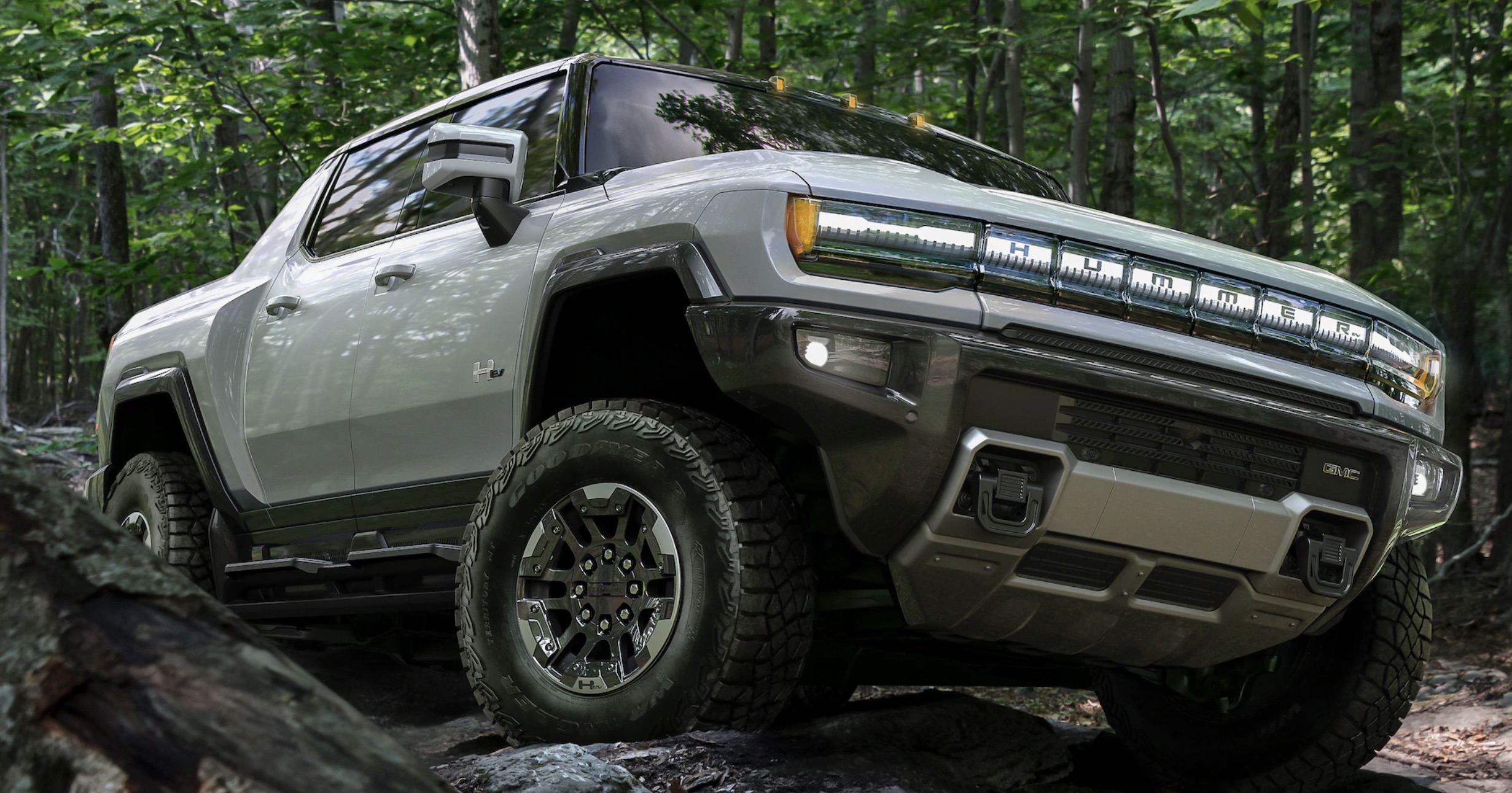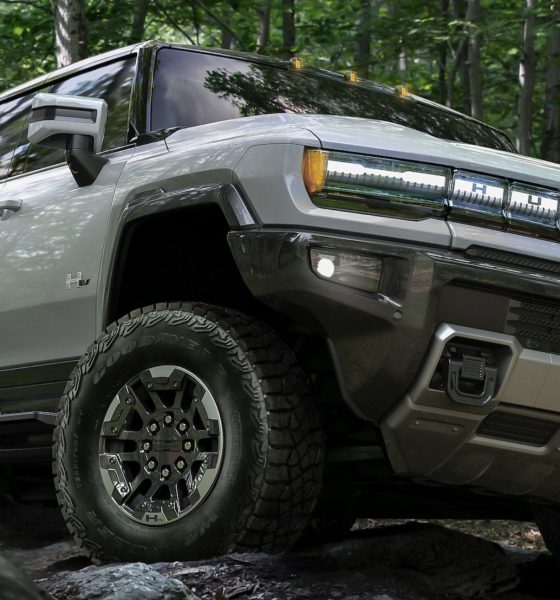GM recently took the wraps off the Hummer EV, its first foray into the budding all-electric pickup truck market. Inasmuch as the vehicle’s five-minute video unveiling was compelling, it soon became evident that the impressive feats being showcased by the Hummer EV in its reveal were not necessarily real. Soon, a GM engineer reportedly admitted that the company doesn’t have a fully-functioning prototype of the Hummer EV yet, and the vehicle shown in the unveiling was computer-generated.
Yet despite this, the Hummer EV has garnered a significant amount of praise, even from veteran auto reviewers. Doug DeMuro, one of the most prolific car reviewers on YouTube, remarked that the Hummer EV seemed to be farther along in its development compared to rivals such as the Tesla Cybertruck and the Rivian R1T. This statement unsurprisingly caught the ire of the Tesla enthusiast community, and it did not take long before legitimate arguments against the Hummer EV were dismissed since they were coming from a “Tesla fanboy” angle.
But let’s forget Tesla and the Cybertruck for a minute.
Even if one removes Tesla and its post-apocalyptic steel triangle on wheels out of the equation, the Hummer EV still fails to do justice to the EV efforts of rival automakers, both veterans and newcomers alike. This is especially notable when it comes to the all-electric vehicles that companies like Ford, Porsche, Rivian, and Polestar have created. Compared to the Mustang Mach-E, the Rivian R1T, the Polestar 2, and the Porsche Taycan—even the Ford F-150 Electric—the Hummer EV is barely more than CGI.
This was highlighted by electric vehicle veteran and enthusiast Sean Mitchell, who noted that the display unit Hummer EV showcased in the all-electric pickup’s early reviews had an electrical cord running from the truck to a plug. This is common practice for vehicles that are placed in displays, as it prevents batteries from being discharged. There is only one issue: the Hummer EV is supposed to be equipped with a massive 200 kWh battery, a pack that could, at least theoretically, power the truck’s electronics for weeks on its own.
Granted, later comments from reviewers such as DeMuro noted that they did see a moving Hummer EV display unit during their initial review of the vehicle. This is a low bar, however, as a small motor and a small battery pack could have been used to propel the vehicle. This is something that has not been done by GM’s competitors. Multiple Porsche Taycans were driven onstage during the car’s unveiling, for example, and the Rivian R1T was fully-functioning when it was showcased for the first time. Even the Mustang Mach-E and Polestar 2 had working units that needed no electrical cord when they were unveiled.
With these in mind, as well as the fact that reports have pointed at the Hummer EV only being 18 months into its development cycle, it does seem to be a stretch to argue that the Hummer EV is farther along in its production than its competitors. The F-150 Electric, a truck that Ford notes will be produced in a few years, already has a prototype that is capable of pulling a train car that weighs 1 million pounds. The Rivian R1T, a truck that has spent years in development, recently completed an eight-day rally over 2,000 kms. That’s something that the Hummer EV seems to be capable of doing only in CGI, at least for now.
GM intends to start delivering the Hummer EV in Fall 2021. Rivian, for its part, is aiming to start deliveries of its very-much-production-ready R1T by mid-2021. The Tesla Cybertruck is also poised to begin deliveries by the end of next year.
Watch Sean Mitchell’s take on the Hummer EV’s unveiling in the video below.

Elon Musk
Elon Musk’s X will start using a Tesla-like software update strategy
The initiative seems designed to accelerate updates to the social media platform, while maintaining maximum transparency.

Elon Musk’s social media platform X will adopt a Tesla-esque approach to software updates for its algorithm.
The initiative seems designed to accelerate updates to the social media platform, while maintaining maximum transparency.
X’s updates to its updates
As per Musk in a post on X, the social media company will be making a new algorithm to determine what organic and advertising posts are recommended to users. These updates would then be repeated every four weeks.
“We will make the new 𝕏 algorithm, including all code used to determine what organic and advertising posts are recommended to users, open source in 7 days. This will be repeated every 4 weeks, with comprehensive developer notes, to help you understand what changed,” Musk wrote in his post.
The initiative somewhat mirrors Tesla’s over-the-air update model, where vehicle software is regularly refined and pushed to users with detailed release notes. This should allow users to better understand the details of X’s every update and foster a healthy feedback loop for the social media platform.
xAI and X
X, formerly Twitter, has been acquired by Elon Musk’s artificial intelligence startup, xAI last year. Since then, xAI has seen a rapid rise in valuation. Following the company’s the company’s upsized $20 billion Series E funding round, estimates now suggest that xAI is worth tens about $230 to $235 billion. That’s several times larger than Tesla when Elon Musk received his controversial 2018 CEO Performance Award.
As per xAI, the Series E funding round attracted a diverse group of investors, including Valor Equity Partners, Stepstone Group, Fidelity Management & Research Company, Qatar Investment Authority, MGX, and Baron Capital Group, among others. Strategic partners NVIDIA and Cisco Investments also continued support for building the world’s largest GPU clusters.
News
Tesla FSD Supervised wins MotorTrend’s Best Driver Assistance Award
The decision marks a notable reversal for the publication from prior years, with judges citing major real-world improvements that pushed Tesla’s latest FSD software ahead of every competing ADAS system.

Tesla’s Full Self-Driving (Supervised) system has been named the best driver-assistance technology on the market, earning top honors at the 2026 MotorTrend Best Tech Awards.
The decision marks a notable reversal for the publication from prior years, with judges citing major real-world improvements that pushed Tesla’s latest FSD software ahead of every competing ADAS system. And it wasn’t even close.
MotorTrend reverses course
MotorTrend awarded Tesla FSD (Supervised) its 2026 Best Tech Driver Assistance title after extensive testing of the latest v14 software. The publication acknowledged that it had previously criticized earlier versions of FSD for erratic behavior and near-miss incidents, ultimately favoring rivals such as GM’s Super Cruise in earlier evaluations.
According to MotorTrend, the newest iteration of FSD resolved many of those shortcomings. Testers said v14 showed far smoother behavior in complex urban scenarios, including unprotected left turns, traffic circles, emergency vehicles, and dense city streets. While the system still requires constant driver supervision, judges concluded that no other advanced driver-assistance system currently matches its breadth of capability.
Unlike rival systems that rely on combinations of cameras, radar, lidar, and mapped highways, Tesla’s FSD operates using a camera-only approach and is capable of driving on city streets, rural roads, and freeways. MotorTrend stated that pure utility, the ability to handle nearly all road types, ultimately separated FSD from competitors like Ford BlueCruise, GM Super Cruise, and BMW’s Highway Assistant.
High cost and high capability
MotorTrend also addressed FSD’s pricing, which remains significantly higher than rival systems. Tesla currently charges $8,000 for a one-time purchase or $99 per month for a subscription, compared with far lower upfront and subscription costs from other automakers. The publication noted that the premium is justified given FSD’s unmatched scope and continuous software evolution.
Safety remained a central focus of the evaluation. While testers reported collision-free operation over thousands of miles, they noted ongoing concerns around FSD’s configurable driving modes, including options that allow aggressive driving and speeds beyond posted limits. MotorTrend emphasized that, like all Level 2 systems, FSD still depends on a fully attentive human driver at all times.
Despite those caveats, the publication concluded that Tesla’s rapid software progress fundamentally reshaped the competitive landscape. For drivers seeking the most capable hands-on driver-assistance system available today, MotorTrend concluded Tesla FSD (Supervised) now stands alone at the top.
News
Elon Musk’s Grokipedia surges to 5.6M articles, almost 79% of English Wikipedia
The explosive growth marks a major milestone for the AI-powered online encyclopedia, which was launched by Elon Musk’s xAI just months ago.

Elon Musk’s Grokipedia has grown to an impressive 5,615,201 articles as of today, closing in on 79% of the English Wikipedia’s current total of 7,119,376 articles.
The explosive growth marks a major milestone for the AI-powered online encyclopedia, which was launched by Elon Musk’s xAI just months ago. Needless to say, it would only be a matter of time before Grokipedia exceeds English Wikipedia in sheer volume.
Grokipedia’s rapid growth
xAI’s vision for Grokipedia emphasizes neutrality, while Grok’s reasoning capabilities allow for fast drafting and fact-checking. When Elon Musk announced the initiative in late September 2025, he noted that Grokipedia would be an improvement to Wikipedia because it would be designed to avoid bias.
At the time, Musk noted that Grokipedia “is a necessary step towards the xAI goal of understanding the Universe.”
Grokipedia was launched in late October, and while xAI was careful to list it only as Version 0.1 at the time, the online encyclopedia immediately earned praise. Wikipedia co-founder Larry Sanger highlighted the project’s innovative approach, noting how it leverages AI to fill knowledge gaps and enable rapid updates. Netizens also observed how Grokipedia tends to present articles in a more objective manner compared to Wikipedia, which is edited by humans.
Elon Musk’s ambitious plans
With 5,615,201 total articles, Grokipedia has now grown to almost 79% of English Wikipedia’s article base. This is incredibly quick, though Grokipedia remains text-only for now. xAI, for its part, has now updated the online encyclopedia’s iteration to v0.2.
Elon Musk has shared bold ideas for Grokipedia, including sending a record of the entire knowledge base to space as part of xAI’s mission to preserve and expand human understanding. At some point, Musk stated that Grokipedia will be renamed to Encyclopedia Galactica, and it will be sent to the cosmos.
“When Grokipedia is good enough (long way to go), we will change the name to Encyclopedia Galactica. It will be an open source distillation of all knowledge, including audio, images and video. Join xAI to help build the sci-fi version of the Library of Alexandria!” Musk wrote, adding in a later post that “Copies will be etched in stone and sent to the Moon, Mars and beyond. This time, it will not be lost.”










